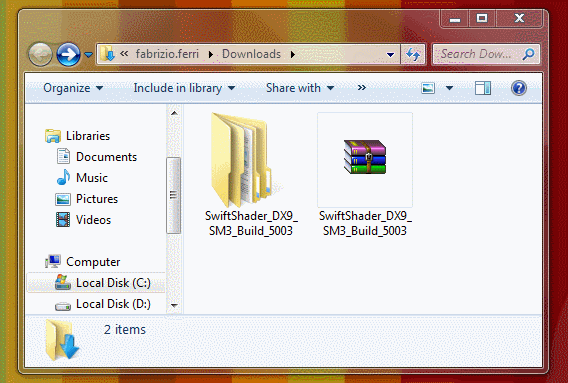

- #DIRECTX 9.0 SHADER MODEL 3.0 FULL#
- #DIRECTX 9.0 SHADER MODEL 3.0 CODE#
- #DIRECTX 9.0 SHADER MODEL 3.0 PROFESSIONAL#
- #DIRECTX 9.0 SHADER MODEL 3.0 SERIES#
- #DIRECTX 9.0 SHADER MODEL 3.0 WINDOWS#
This functionality can remove a lot of the overhead created by including multiple objects based on the same 3d model (these objects are called instances). One of the coolest things that VS3.0 offers is something called instancing.

This will get even more exciting when we make our way into the next DirectX revision which will allow for dynamic creation of vertices (think very cool particle systems and hardware morphing of geometry). Vertex textures are also supported, allowing more dynamic manipulation of vertices. The instruction limit on VS3.0 is also extended to over 65000. Vertex Shader 3.0 extends its flow control ability by adding if/then/else statements and including the ability to call subroutines in shader programs. Our example of choice will be shading a tree: one shader can handle rendering the dynamics of each leaf, smooth new branches near the top, rugged old bark on the trunk, and dirty roots protruding from the soil. Rather than having to run multiple shaders that do different things on different groups of pixels, developers can have a single shader handle an entire object and take care of all its shading needs. Branching allows a shader program the expanded ability to make decisions based on its current state and inputs.
#DIRECTX 9.0 SHADER MODEL 3.0 CODE#
The flow control will give developers the freedom to write more intuitive code without sacrificing efficiency. The main advantage here is the ability for developers to write longer, more complex, shader programs that run more efficiently.
#DIRECTX 9.0 SHADER MODEL 3.0 FULL#
This revision also requires that compliant hardware offer 4 Multiple Render Targets (MRT's allow shaders to draw to more than one location in memory at a time), full 32-bit floating point precision, shader antialiasing, and a total of ten texture coordinate inputs per pixel. Pixel Shader 3.0 (PS3.0) allows shader programs of over 65,000 lines and includes dynamic flow control (branching). This can end up being a little misleading because whereas the 'a' and 'b' revisions mostly extended and tweaked functionality, the 'c' revision adds abilities that are absent from its predecessors. Rather than calling this DirectX 9.1, Microsoft opted to go for a more "incremental" looking update. The new feature in DirectX 9.0c is the inclusion of Pixel Shader and Vertex Shader 3.0. NVIDIA is headquartered in Santa Clara, California, and employs more than 1,800 people worldwide.This year the latest in the DirectX API is getting a bit of a face lift.
#DIRECTX 9.0 SHADER MODEL 3.0 PROFESSIONAL#
Its graphics and communications processors have broad market reach and are incorporated into a wide variety of computing platforms, including consumer digital-media PCs, enterprise PCs, professional workstations, digital content creation systems, notebook PCs, military navigation systems and video game consoles. ( is a market leader in visual computing technology dedicated to creating products that enhance the interactive experience on consumer and professional computing platforms.
#DIRECTX 9.0 SHADER MODEL 3.0 WINDOWS#
More than a dozen Windows games currently in development, as well as key game engine technologies including Unreal Engine 3 from Epic Games, are expected to take advantage of Shader Model 3.0's Pixel Shader 3.0 and Vertex Shader 3.0 specification in order to reach new levels of cinematic quality never before seen in 3D games. "Until now, there hasn't been a graphics hardware platform that could fully exploit the complete range of features and advancements of DirectX 9.0." "NVIDIA GPUs are architected to unleash programmer creativity," added Mark Daly, vp of content development at NVIDIA.
#DIRECTX 9.0 SHADER MODEL 3.0 SERIES#
"The programmability and precision of NVIDIA's GeForce 6 Series of GPUs are expected to provide game developers with a powerful, flexible, and stable platform for delivering faster, smoother and ultra-realistic gameplay." "Developers now have an opportunity to fully exploit all the capabilities that have been built into DirectX 9.0," said Dean Lester, general manager of Windows Graphics & Gaming Technologies at Microsoft. NVIDIA will demonstrate the GeForce 6 Series and the capabilities of the Shader Model 3.0 specification on Booth #119 at the Windows Hardware Engineering Conference (WinHEC), May 4-7 at the Washington State Trade and Convention Center in Seattle. announced that its recently-released GeForce 6 series of graphics processing units (GPUs) is the first and only graphics hardware platform to take full advantage of Shader Model 3.0, an integral part of Microsoft DirectX 9.0, the advanced programming interface (API) widely used by developers to create cutting-edge gaming experiences.


 0 kommentar(er)
0 kommentar(er)
